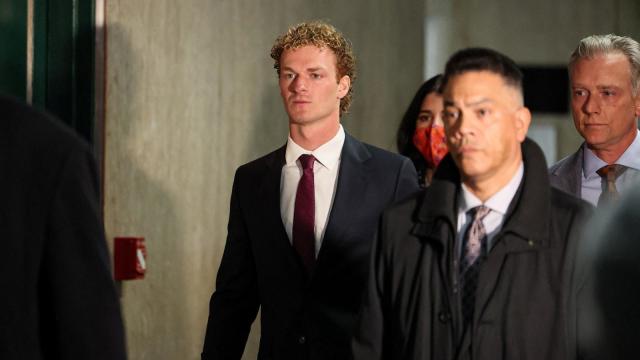The subway, often described as the pulse of New York City, serves as a microcosm of the diverse and complex dynamics that define urban life. Yet, beneath the hustle and bustle of daily commutes lies a sobering reality: incidents of violence and tragedy can shatter the illusion of safety and civility in an instant. The case of Daniel Penny, charged in the chokehold death of Jordan Neely on a subway train, epitomizes the collision of individual rights, public safety, and the quest for justice.
As the trial date looms on the horizon, the eyes of the nation turn to Manhattan Criminal Court, where Penny will face the legal consequences of his actions. The prosecution alleges that Penny, a Marine veteran, unlawfully took matters into his own hands, resulting in the tragic death of Neely, a 30-year-old street performer with a history of mental illness and homelessness.
Central to the upcoming trial is the question of self-defense. Penny’s defense attorneys contend that their client acted in defense of himself and fellow subway passengers, reacting to Neely’s erratic behavior and verbal threats. However, the prosecution paints a starkly different picture, accusing Penny of excessive force and reckless disregard for human life.
The events leading up to Neely’s death, as recounted in court documents, paint a harrowing picture of chaos and confrontation. Witnesses describe a tense altercation unfolding on the F train, with Neely allegedly instigating conflict and exhibiting signs of agitation. It is within this volatile context that Penny intervened, placing Neely in a chokehold that proved fatal.
The tragic outcome of this encounter reverberated throughout New York City, sparking outrage and calls for accountability. Neely’s family, supported by their attorney, Lennon Edwards, has been vocal in their pursuit of justice, advocating for Penny to face the full extent of the law. For them, the trial represents a chance to honor Neely’s memory and seek closure in the face of unimaginable loss.
Yet, as the legal proceedings unfold, broader questions about accountability and public safety come to the fore. The subway, often hailed as a symbol of urban connectivity, must also confront the reality of violence and unrest that lurks within its tunnels. The case of Daniel Penny serves as a sobering reminder of the complexities inherent in maintaining order and security in public spaces.
As the trial commences, the eyes of the nation remain fixed on the outcome, grappling with issues of justice, accountability, and the delicate balance between individual rights and collective safety. For Penny, Neely, and all those affected by this tragedy, the pursuit of justice offers a glimmer of hope in the face of profound grief and uncertainty.
In the heart of New York City, where the subway serves as a lifeline for millions, the trial of Daniel Penny stands as a testament to the enduring quest for truth and reconciliation in the wake of tragedy. As the wheels of justice turn, may they bring clarity, closure, and healing to a city in search of solace.
